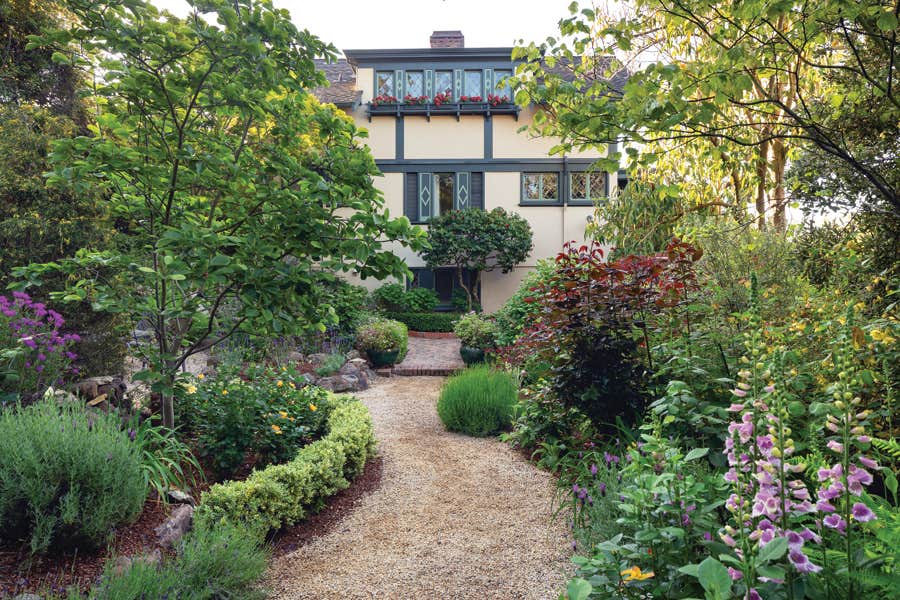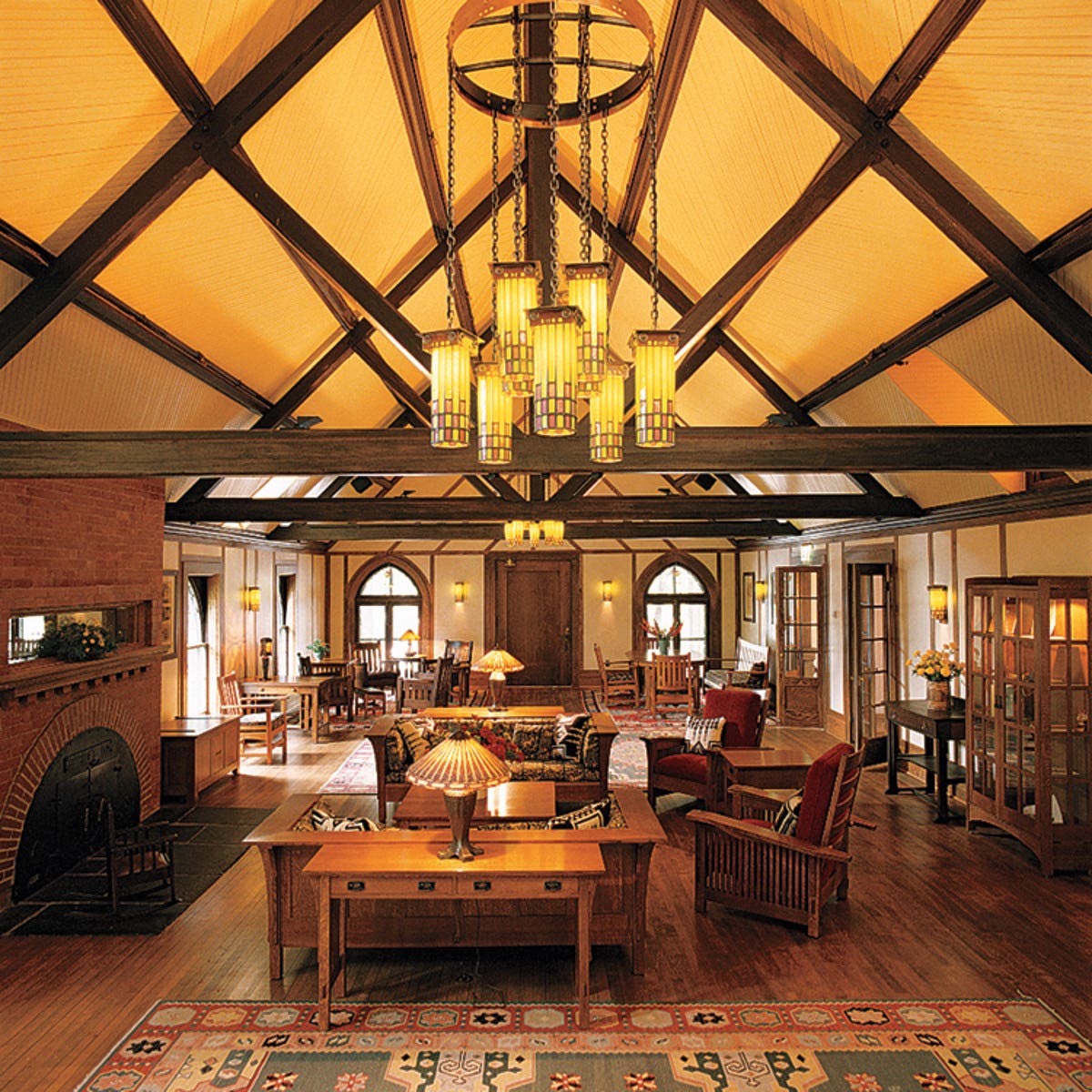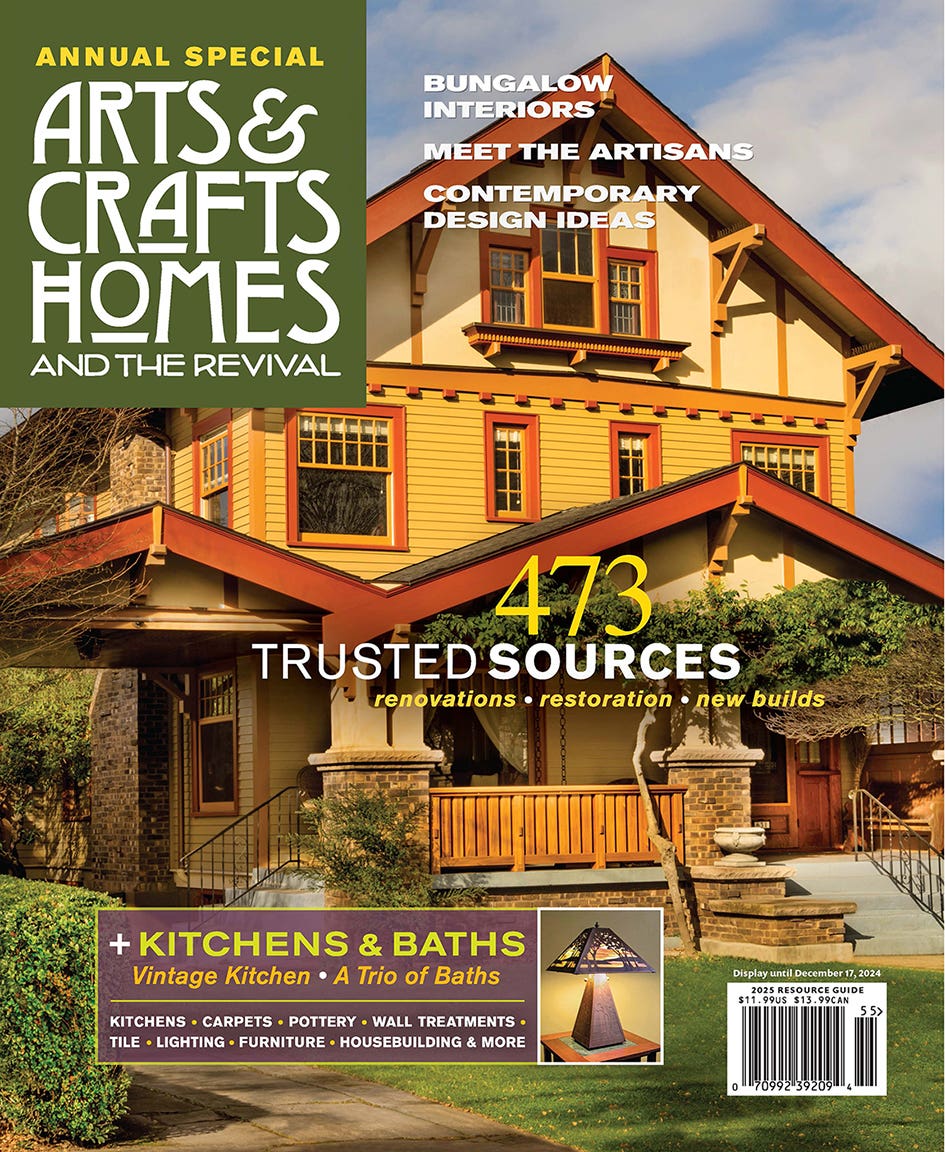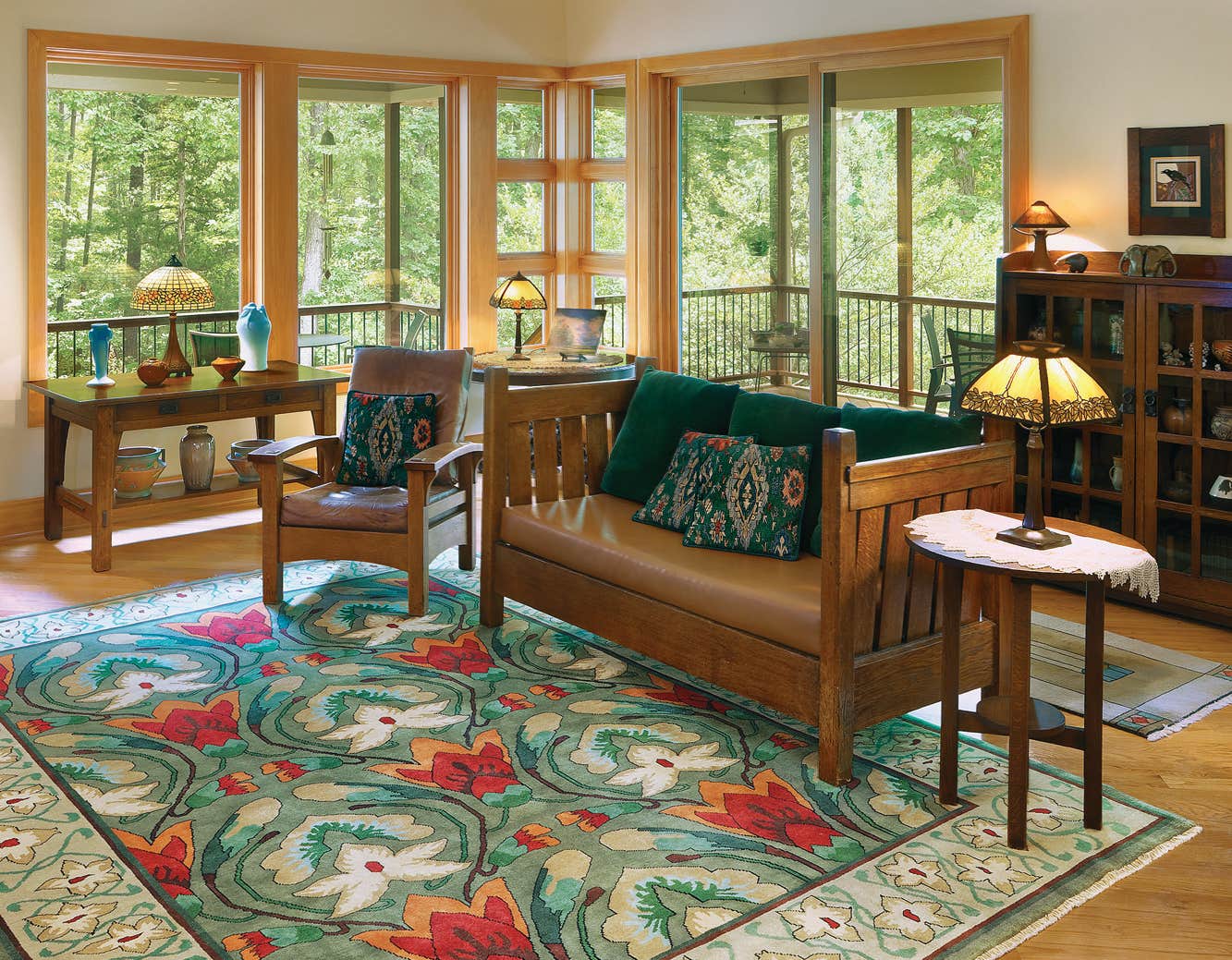A Handsome “Green” Foursquare
A sustainable Arts & Crafts Foursquare: a Maryland company finds inspiration for its high-quality, energy-efficient homes in the building traditions of the bungalow era.
Photos by Erick Gibson
Bethesda Bungalows, launched by two people in 2004, is a notable exception in the recent economic downturn, which hit the building industry especially hard. “We promote smaller homes, but we’re all about quality and value,” says Brad Beeson. “When our company was founded, other builders laughed at us. They were putting up McMansions, and they called ours ‘trailer park houses’. Now, they envy us.”
Six years after a small beginning, 25 employees hustle to keep up with demand for Bethesda Bungalows’ signature product: “green” adaptations of Arts & Crafts houses. Most of them are small by today’s up-market standards, but they marry optimal energy efficiency with good looks—a combination that’s catnip to today’s homebuyers.
Shown here is one of the company’s recently completed projects, a Foursquare in Chevy Chase, Maryland. At 4,700 square feet, the house is not their smallest model, yet it fits seamlessly on an infill site in a medium density neighborhood. The house, which has bungalow-era and Prairie-style details, was designed by noted bungalow revivalist Christian Gladu of Bend, Oregon. Called “The Incredibly Green Home of Chevy Chase” by its builder, the house boasts the high-quality, energy-efficient construction that got it platinum-level LEED certification, the first such honor in Montgomery County.
“Historically, bungalows have always been a naturally efficient home, and the original ‘anti-mansion’,” says Peter Guida, company founder and president. “These homes are perfect for smaller lots in the city and for close-in suburbs.”
From the insulated foundation to the rooftop solar panels, the Chevy Chase Foursquare embodies modern energy efficiency. Although LEED certification dates only to 2008, the philosophy is familiar to students of the Arts &Crafts movement and its revival. In the “Incredibly Green Home,” the idea resulted in the use of mold-resistant drywall, cabinets constructed from American cherry certified by the Forest Stewardship Council, materials with sources close to home, glass re-used from old windows, low-VOC paint, and recycled-fiber carpeting.
Its Arts & Crafts personality evident in the house form and its details, the Chevy Chase Foursquare boasts five bedrooms and five baths on three floors. Today’s sensibility drove the open plan of the main level, where living and dining rooms flow into the kitchen. But with tapered square columns, cloud-lift mirror frames and cabinet doors, prominent cornices, and a four-squares motif reminiscent of Wright and Mackintosh, the inspiration for the millwork dates to a century ago.
“We think of it as a Frank Lloyd Wright–Japanese fusion,” says Beeson, who was responsible for much of the interior design. “It combines Arts & Crafts woodwork with a spare simplicity; our workers call it ‘Shinto cabinetry’.”
Bethesda Bungalows’ source for cabinets is Victory Woodworking of Canaan, New Hampshire, a shop owned by Peter Guida’s uncle, Andrew Daum. Daum used glass reclaimed from an old New England farmhouse for upper kitchen-cabinet doors.
In these photos taken on completion, interior paint colors speak more of 2011 than 1911. “We used neutrals,” Beeson says, “because the house was built on spec, and we didn’t want to take the risk of historic, saturated colors on the walls.” Besides a home theater, contemporary elements in the house include a luxuriously appointed, tiled laundry and double sinks in the master bath. In the garage, there’s an outlet for an electric car.
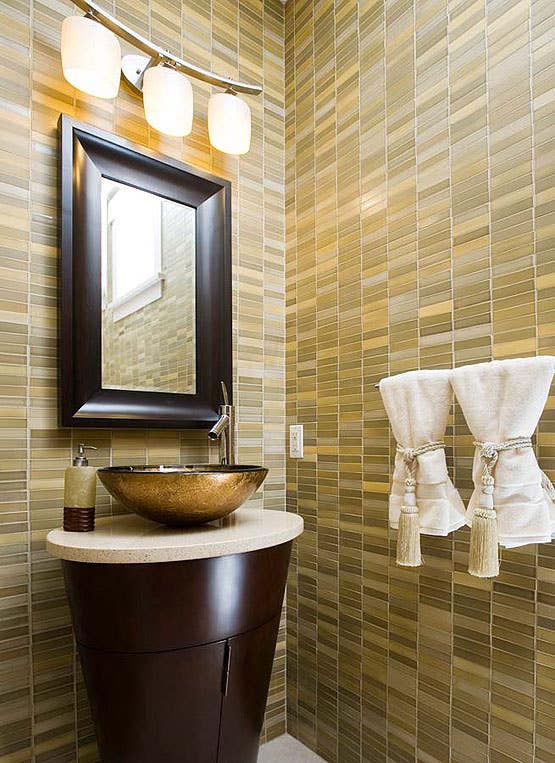
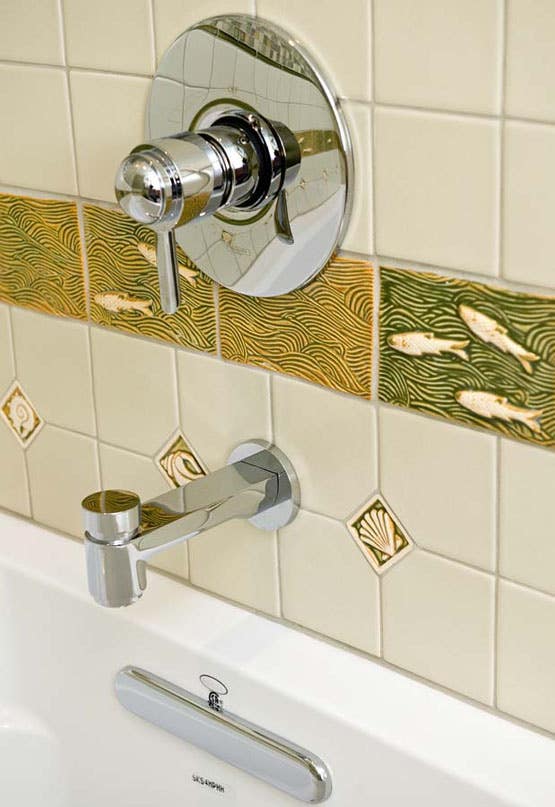
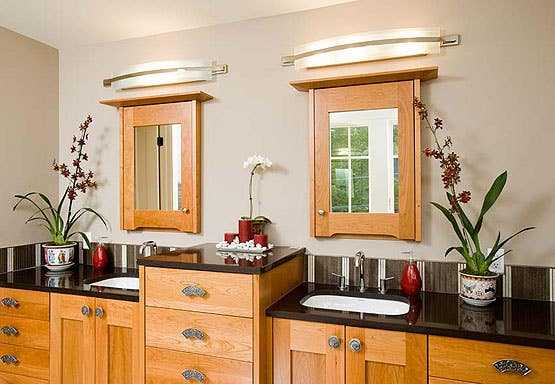
“The house is within walking distance of public transportation,” Peter Guida says. That was important to homeowners 100 years ago, and is once again a valued selling point. The shops and businesses of downtown Bethesda are less than a mile away, making it easy to run errands on foot. Even without an electric car, the residents will conserve energy and save money: this house will do it for them.
Taking the LEED
LEED, an acronym for Leadership in Energy and Environmental Design, provides builders and homeowners with internationally recognized standards for green building design, construction, operations, and maintenance. Guidelines govern standards intended to improve performance in energy savings, water efficiency, CO2 emissions reduction, improved indoor environmental quality, stewardship of resources, and sensitivity to their impacts.
Developed by the U.S. Green Building Council (USGBC), LEED has become industry shorthand for not only energy efficiency and conservation, but also for superior quality.
To view more photos of this home, visit the architect's website.
Regina Cole is an author and freelance writer for national and regional magazines on all aspects of architecture, interior design, landscape design, and yacht design. Cole specializes in historic architecture and period interiors.
Her work has appeared in a large number of publications, including the daily and Sunday Boston Globe, Interior Design, Old House Journal, Ocean Home, New Old House, Traditional Building, New England Home, Design New England, Maine Boats, Homes and Harbors, Forbes.com, and others.
She has been honored with a number of national writing prizes, including the Association for Garden Communicators Silver Award for a Magazine Article, the National Association of Real Estate Editors Silver Award for Best Residential Real Estate Story in a Daily Newspaper, and the National Association of Real Estate Editors Gold Award for the Best Architecture Story.




